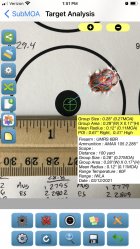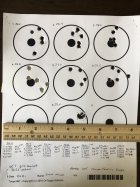Alex Wheeler
Site $$ Sponsor
The target is the optimal equipment. That was the point I was trying to make.It probably wouldn't be necessary to take hyper-accurate measurements regarding apparent changes in barrel length with different tuner settings. All that would be needed would be to analyze the barrel harmonics at different tuner settings. The effects of tuners at the correct setting on barrel harmonics have been fairly well-characterized and should be reproducible simply by monitoring the barrel harmonics. With the correct equipment, it might even be possible to do this by simply tapping the barrel with a mallet (or something similar) to set up the harmonics. This is not my idea, but was recently suggested to me by Steve Blair. However, a number of recent posts here regarding the use of tuners and my own reading on the topic suggests it is a reasonable hypothesis. At the very least, with the correct equipment, it would be pretty easy to test whether optimal tuner settings "predicted" by this approach matched, or were even close, to optimal tuner settings determined empirically through firing and group analysis. To be honest, I'm not sure exactly what is currently considered to be the optimal equipment necessary to do barrel harmonic analysis. However, I'm pretty sure that whatever it is, most people don't own one, which is likely one of the reasons people don't do it this way.












